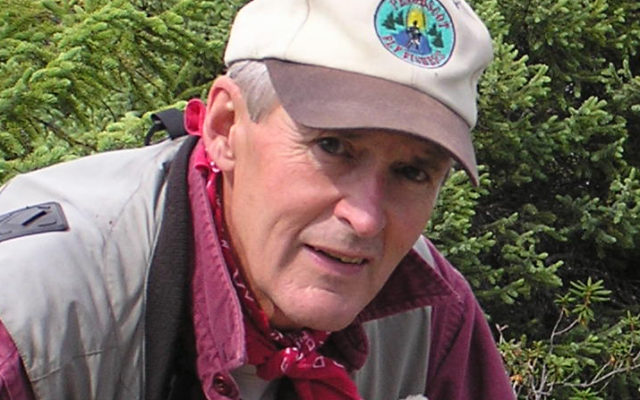
Maine moose season is on
By V. Paul Reynolds
Maine’s fabled “hunt of a lifetime,” the 42nd annual moose season, is in full swing. It kicked off a half hour before sunrise on Sept 26. Before it’s over, more than 4,000 hunters and their respective sub-permittees will be glassing the wetland edges, fir thickets and clear cuts in search of a trophy bull or cow.
As with any hunt, luck plays a big part — not only in drawing a tag out of a field of 70,000 hopeful hunters, but in finding the right critter in the alloted time period.
Success rates? Past is not prologue when it comes to hunter success percentages. When the hunt started 42 years ago, the harvest rate hovered about 80 percent. Due to changing habitat, smarter moose, and other factors, experts are looking for a harvest rate in the mid-60s percentile.
Here’s the lowdown from MDIFW:
The moose season consists of multiple week-long seasons and one month-long season. There are 1,050 permits for the opening week in the far northern and eastern areas of the state Sept. 26 through Oct. 1. An additional 1,580 permits are for moose hunting Oct. 10 through 15. There are 860 permits for moose hunting Oct. 24 through 29, and 40 permits for moose hunting in west-central Maine Oct. 29 through Nov. 26. In Zone 4 in northern Somerset and Piscataquis counties, there also is an adaptive moose hunt designed to lower the moose population to see if lower moose densities will lower winter tick densities. Winter ticks are the primary killer of moose calves. The weeks and number of permits for this hunt is as follows: Oct. 17-22, 200 cow permits; Oct. 24-29, 150 cow permits; and Oct. 31-Nov. 5, 200 cow permits.
Last year, 65% of all moose hunters were successful. The success rate for moose hunters is in stark contrast to bear, turkey or deer hunting, where success rates range historically from 18 to 30 percent.
All successful moose hunters are required to register their moose at the nearest tagging station. At these stations, IFW wildlife biologists collect data that provides insight into moose population health. A tooth is removed in order to determine the age of the moose. Antler spread (width) is measured on bulls. Ticks are counted on four different areas of the moose to compare numbers to years past. In later weeks, moose hunters who shoot a female moose are required to bring the ovaries, which are later examined to determine reproductive success.
This biological data is combined with data from the moose GPS collar study, as well as the aerial moose population and composition surveys to give biologists a clearer picture of the health and status of Maine’s moose herd. Over the past nine years, the department has captured, collared and tracked over 750 moose, providing unique insight into moose survival and reproduction.
Here are a couple of tips, especially applicable to those moose hunters new to the undertaking.
1) Get out of the truck and back in the woods. Moose are generally wiser now than they were 40 years ago.
2) If you bag a moose, seriously consider dry dressing the critter and dividing it into four quarters, plus backstrap. (On its website, MDIFW has a very useful video on dry dressing, or gutless dressing, and quartering.) Not only does quartering make transportation easier, it is the best way to fast cool the meat and protect that precious cache of delicious wild meat.
Wear orange and hunt safely.
The author is editor of the Northwoods Sporting Journal. He is also a Maine Guide and host of a weekly radio program “Maine Outdoors” heard Sundays at 7 p.m. on The Voice of Maine News-Talk Network. He has authored three books. Online purchase information is available at www.sportingjournal.com, Outdoor Books.